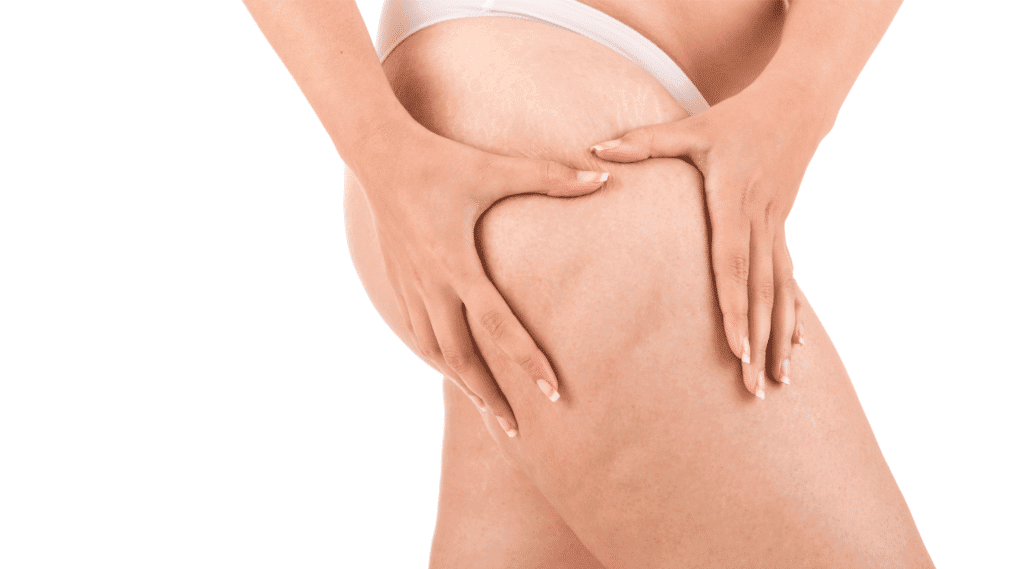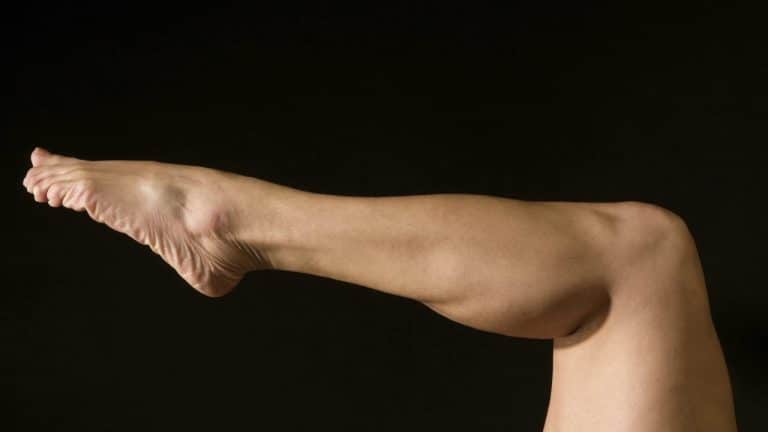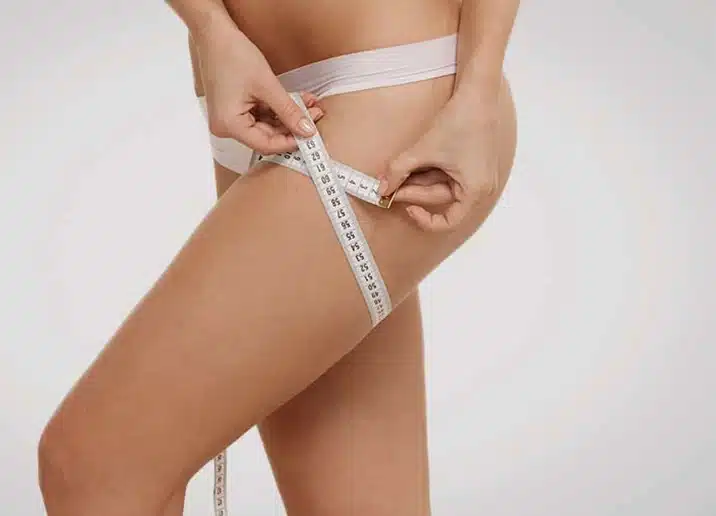Beyond Creams: Navigating the Range of Professional Cellulite Treatment Options
Cellulite, a term that often carries with it the weight of aesthetic concern, affects many individuals regardless of lifestyle. Characterized by dimpled flesh commonly found on thighs, hips, buttocks, and abdomen, cellulite is not indicative of health issues but can be a source of self-consciousness for those who have it. This blog post demystifies cellulite by exploring its causes and examining effective strategies for management and reduction.
Understanding the Etiopathogenesis of Cellulite
Contributing Factors
Cellulite occurs when fat cells under the skin enlarge. This can cause the overlying dermis to protrude, creating a dimpled appearance. Several factors contribute to this condition.
- Hormonal changes play a significant role in cellulite development. They can alter fat distribution and connective tissue strength.
- Genetics determine skin structure, fat storage, and circulation patterns.
- The unique structure of connective tissue in different individuals affects how visible cellulite becomes.
When these elements combine, they set the stage for cellulite forms to appear on the body.
Cellular Mechanisms
At a cellular level, adipocytes (fat cells) and extracellular matrix are key players in cellulite’s pathophysiology. Adipocytes trapped within fibrous bands beneath the skin swell with excess fat. This puts pressure on surrounding tissues.
The extracellular matrix is made up of proteins like collagen and elastin that provide structural support. When it weakens or becomes distorted due to biomechanical forces or aging, it allows for more pronounced fat cell expansion leading to dimpling known as cellulite.
Furthermore, impaired lymphatic drainage can lead to fluid accumulation which exacerbates swelling of adipose tissues thus worsening cellulite appearance. Circulatory issues also have an impact by limiting oxygen and nutrient delivery as well as waste removal from these areas causing further deterioration of skin texture.
Assessing the Effectiveness of Cellulite Treatments
Treatment Comparison
Clinical trials are key to understanding which cellulite treatments work best. Studies compare different methods to find the most effective treatment. Some treatments show significant improvements in cellulite severity, while others do not.
Patients often undergo several treatments before seeing changes. Each treatment session can vary in effectiveness. For instance, laser therapy might reduce dermal thickness more than a cream.
Expectations vs Results
Patient satisfaction is crucial when assessing efficacy. Realistic expectations lead to higher satisfaction rates. It’s important for patients to know that some results may be temporary.
Long-term studies provide insight into how effects last over time. Short-term gains may fade without ongoing treatment sessions or lifestyle changes like diet and exercise.
Efficacy Studies
Studies consider both short and long-term results of cellulite treatments. Effective treatment usually requires multiple sessions over time. Patients should expect gradual rather than immediate improvement.
Weight fluctuations can also affect outcomes, as they impact skin elasticity and fat distribution in the affected area.
Acoustic Wave Therapy and Radiofrequency in Cellulite Reduction
Acoustic Waves
Acoustic wave therapy (AWT) targets cellulite by emitting vibrations. These waves break down fat cells under the skin. The process is like a deep tissue massage but more intense.
This therapy also disrupts the fibrous bands causing dimpled skin. With regular sessions, patients often see a smoother appearance. Studies show AWT can effectively reduce thigh circumference too.
Radiofrequency Energy
Radiofrequency (RF) devices work differently. They use heat to stimulate collagen production in the skin. This leads to tighter, more elastic skin over time.
RF treatments improve skin texture by heating deeper layers of tissue without damaging the top layer of skin. Patients typically experience minimal discomfort with RF therapies compared to other methods like laser energy or ultrasound treatments.
Success Rates
Comparing success rates between AWT and RF is important for informed choices:
- AWT has been shown to break down fat cells efficiently.
- RF excels at improving overall skin texture and firmness.
Studies indicate both methods are effective, yet they excel in different areas of cellulite reduction. Some research suggests combining therapies may yield optimal results due to their complementary actions on fat breakdown and collagen stimulation.
QWO Injection and Subcision Techniques for Treatment
QWO Injections
QWO injections are a recent advancement in cellulite treatment. The FDA has approved these injectable treatments specifically for attacking the fibrous septae. These septae pull down on the skin, creating dimpling seen in cellulite.
The process involves small needles that deliver enzymes to break down these bands. This action helps smooth out the skin’s surface. Most patients need three sessions spaced 21 days apart.
Recovery Times
After receiving a QWO injection or undergoing subcision, recovery is generally quick. Patients can usually resume daily activities almost immediately.
However, some may experience bruising or discomfort at the injection site. It’s important to follow post-procedure care instructions closely to ensure proper healing and minimize side effects.
Side Effects
With any medical procedure, there are potential side effects to consider. Common ones include mild pain and short-term bruising around treated areas.
Rarely, allergic reactions or more serious complications could occur with QWO injections or subcision techniques. Always consult with a healthcare provider before choosing a treatment plan.
Subcision Technique
Subcision is another technique used against cellulite’s tough bands beneath the skin’s surface. A special needle cuts through these bands during this minimally invasive procedure.
This release of tension can significantly reduce dimpling from cellulite.
The Role of Exercise and Lifestyle Changes in Managing Cellulite
Strength Training
Strength training is key for reducing fat and improving muscle tone. By focusing on exercises that target areas prone to cellulite, you can firm up the skin.

Lifting weights or doing bodyweight exercises helps build lean muscle. This can make cellulite less visible. For example, squats and lunges work the thighs and buttocks where cellulite often appears.
Dietary Choices
What you eat affects your skin’s appearance. A diet rich in fruits, vegetables, and whole grains may reduce cellulite visibility.
Avoiding processed foods and sugars is crucial. These can lead to more fat accumulation under the skin. Instead, eating lean proteins helps rebuild muscle fibers beneath the surface.
Hydration Habits
Staying hydrated keeps your skin healthy. Drinking plenty of water each day ensures elasticity which might diminish dimpling from cellulite.
Smoking cessation also benefits skin health significantly. Smoking reduces blood flow, making cellulite worse over time.
By integrating strength training into a routine while adopting healthier dietary habits, individuals may see improvements in their fight against cellulite. Maintaining proper hydration levels alongside quitting smoking can enhance overall skin health, potentially reducing the prominence of cellulite. These lifestyle changes complement medical treatments like QWO injections by addressing underlying issues contributing to its formation.
Exploring Natural Remedies and Oral Supplements for Cellulite
Topical Treatments
Topical agents like caffeine and retinol creams are popular for cellulite management. Caffeine creams may help by dehydrating fat cells, making skin appear smoother. Retinol, on the other hand, can improve skin texture over time.
However, these treatments have limitations. They might not penetrate deeply enough to reach all cellulite layers. Users should apply them consistently over several months to see noticeable results.
Oral Supplements
Research suggests that supplements such as gotu kola could enhance skin elasticity. This plant extract is believed to boost collagen production within the body. Collagen is essential for firm, healthy skin.
Yet, one must approach oral supplements with caution due to potential side effects or interactions with other medications. Always consult a healthcare provider before starting any new supplement regimen.
Safety Considerations
Natural remedies come with their own set of safety concerns:
- Some ingredients in topical applications may cause skin irritation or allergic reactions.
- The long-term efficacy of certain oral supplements has not been thoroughly studied.
It’s crucial to research products and consider personal health conditions when choosing natural remedies for cellulite reduction.
Advances in Non-Surgical Body Contouring for Cellulite
Latest Technologies
Non-surgical body contouring has seen significant advancements. Cryolipolysis and laser treatments are at the forefront. These methods target cellulite effectively, reducing its appearance without surgery.
Cryolipolysis works by freezing unwanted fat cells which then get absorbed by the body over time. Laser treatments, on the other hand, use heat to break down fat cells and stimulate collagen production for skin tightening. Both procedures can significantly improve skin texture and decrease cellulite depressions.
Success Stories
Many people have found success with these non-invasive techniques. For instance, cryolipolysis has helped individuals reduce stubborn subcutaneous fat that contributes to severe cellulite. Similarly, laser treatments have shown promising results in enhancing skin appearance and firmness.
Patients often report not only a reduction in cellulite but also an improvement in overall skin tone and tightness after undergoing these therapies.
Cost-Benefit Analysis
Comparing costs between non-surgical methods and traditional surgical options is important.
- Non-surgical approaches usually require less downtime.
- They can be more cost-effective over time since they may not need repeated sessions like some surgeries do.
However, consulting with a cosmetic surgeon or plastic surgeon is crucial to determine the most suitable method based on individual needs and severity of cellulite.
Expert Insights on Effective Cellulite Reduction Strategies
Treatment Synergy
Experts often recommend combining treatments for cellulite. This approach targets the problem from multiple angles. For instance, a person might pair mechanical massage with laser therapy. These combinations can lead to better outcomes than single treatments.
A study may show that subjects who used a combination saw more fat reduction. The bottom line is synergy helps. But it’s important to have realistic expectations about the extent of improvement.
Professional Assessment
Before starting any treatment plan, an assessment by a dermatologist or cosmetic surgeon is key. They understand cellulite types and can tailor strategies accordingly. They’ll consider factors like age and lifestyle too.
Professionals will determine how many sessions are needed for optimal results. Each person’s experience with cellulite is unique, so individual plans are crucial.
Research Outlook
Looking ahead, research continues to find more effective therapies for cellulite in females and people in general.
- New agents are being tested.
- Studies focus on long-term effects and safety profiles. The goal is not just temporary improvement but lasting change.
Closing Thoughts
The journey through the multifaceted landscape of cellulite reveals a complex condition with diverse treatment modalities. From understanding its etiopathogenesis to evaluating the latest advances in non-surgical body contouring, this article has provided a comprehensive overview of cellulite reduction strategies. Expert insights have underscored the significance of personalized approaches, combining therapies like acoustic wave therapy, radiofrequency, QWO injections, and subcision with lifestyle interventions for optimal outcomes.
As we navigate the myriad options for managing cellulite, it’s clear that no single treatment stands as a panacea. The interplay of professional procedures, exercise, natural remedies, and dietary considerations forms the cornerstone of effective cellulite management. We encourage readers to consult with healthcare professionals to tailor a regimen that aligns with their unique needs. Embark on your journey to smoother skin and bolster your confidence by exploring the treatments discussed herein.
Frequently Asked Questions
What causes cellulite to form?
Cellulite forms due to the herniation of subcutaneous fat within fibrous connective tissue, leading to a dimpled skin appearance. Hormonal factors, genetics, diet, and lifestyle choices are contributing elements.
How can I evaluate if a cellulite treatment is effective?
Assess effectiveness by comparing before-and-after photos, reading clinical study results, and checking for FDA approval or dermatologist recommendations of the treatment in question.
Are acoustic wave therapy and radiofrequency effective for cellulite reduction?
Yes, both treatments have shown efficacy in reducing the appearance of cellulite through improving skin elasticity and promoting collagen production.
What are QWO injections and how do they treat cellulite?
QWO injections contain enzymes that target the structural causes under the skin surface to release fibrous bands, redistribute fat cells, and stimulate collagen growth thereby reducing cellulite.
Can exercise help manage my cellulite?
Regular exercise improves muscle tone and reduces body fat which may decrease the visibility of cellulite. It should be combined with healthy eating habits for best results.
Do natural remedies or oral supplements work for treating cellulite?
Some natural remedies may offer temporary improvements in skin texture; however their efficacy varies. Oral supplements claim to target underlying causes but evidence supporting long-term benefits is limited.
What advances have been made in non-surgical body contouring for treating cellulite?
Recent advances include minimally invasive laser therapies and cryolipolysis which effectively reduce localized fat deposits thus diminishing signs of cellulite without extensive surgery.






